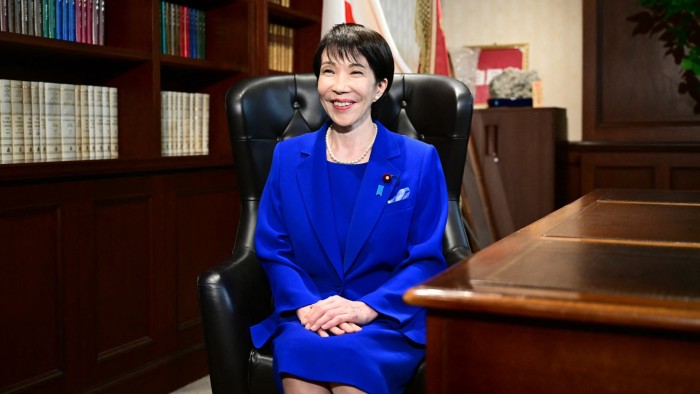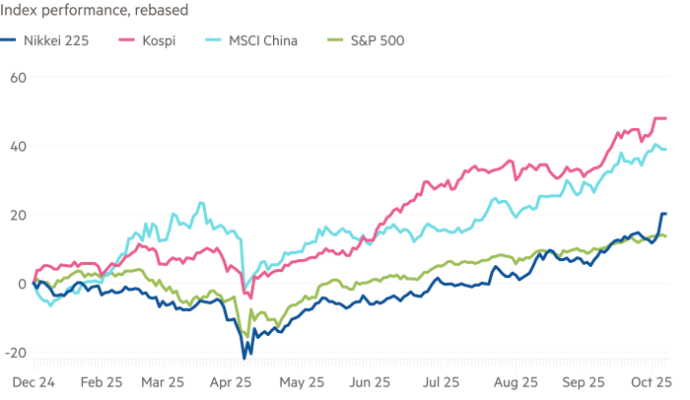
Unlock the Editor’s Digest for free
Roula Khalaf, Editor of the FT, selects her favourite stories in this weekly newsletter.
Is Abenomics back? Sanae Takaichi’s weekend election as head of the Liberal Democratic party means Japan’s next prime minister will be an advocate of the fiscal stimulus, loose monetary policy and structural reform pursued by the late Shinzo Abe as national leader between 2012 and 2020. As the subsequent surge in Tokyo stocks and fall in the yen suggest, this brings both risks and opportunities for Japan and those who invest there.
The first thing to note is how much has changed since Abe’s time. Abenomics aimed to free Japan from deflation. Takaichi’s most pressing political challenge is softening the impact on households of higher prices and ensuring the public does not come to associate current moderate levels of inflation with lower living standards.
Takaichi will also have a much weaker political hand to play than Abe enjoyed when he began his second stint as premier in 2012. The deeply divided and unpopular LDP has lost control of both houses of parliament and will need to expand its ruling coalition or at least reach ad hoc deals with opposition parties to pass budgets and legislation.
This may encourage Takaichi, who softened her tone on stimulative spending during her leadership campaign, to embrace opposition calls for cash handouts and tax cuts. But bond markets have already signalled concern about Japan’s fiscal sustainability and she would be wise to limit largesse to the most hard-pressed groups and most productive sectors. Nor should she put obstacles in the way of monetary normalisation by the Bank of Japan, which looks likely to raise interest rates again soon.
That leaves growth-promoting reform, Abenomics’ “third arrow”. Takaichi can build on progress in improving corporate governance and promoting start-ups. As Japan’s first female prime minister, she could also usefully focus on increasing women’s role in the economy. This goal was central to Abe’s attempt to revitalise the labour market, but Japan has actually fallen in the World Economic Forum’s global gender gap rankings since 2012.
Takaichi deserves credit for making it to the top of the male-dominated LDP. Like her hero, late UK prime minister Margaret Thatcher, she has previously done little to make such ascents easier for women in general, but her campaign promise of “Nordic” levels of female cabinet participation set a welcome aspiration. Just two members of the cabinet of outgoing Prime Minister Shigeru Ishiba are women. Takaichi’s call for greater support for domestic caregivers is also worthy, but her proposed tax breaks on babysitter fees and corporate in-house childcare fall short of what is needed to bring more women into the workforce and boost birth rates.
One way to widen access to childcare, help fill labour shortages in other sectors, and otherwise soften the economic headwind of demographic decline, would be greater opening to foreign workers. But Takaichi has so far stressed instead her concerns about existing levels of immigration and soaring foreign tourist arrivals.
A rightwing tone on immigration may at least help Takaichi get along with Donald Trump. Her mentor Abe was one of the international leaders seen as closest to the US president during his first term. Takaichi suggested she might be able to renegotiate the humiliating trade and investment deals Trump has forced on Japan this year. But even if she can replicate the Abe-Trump chemistry, the US will remain a most unreliable ally.
Internationally as well as domestically, Takaichi cannot and should not try to be an Abe 2.0. A new approach — Takanomics perhaps — will be needed if she wants to be a worthy successor.


